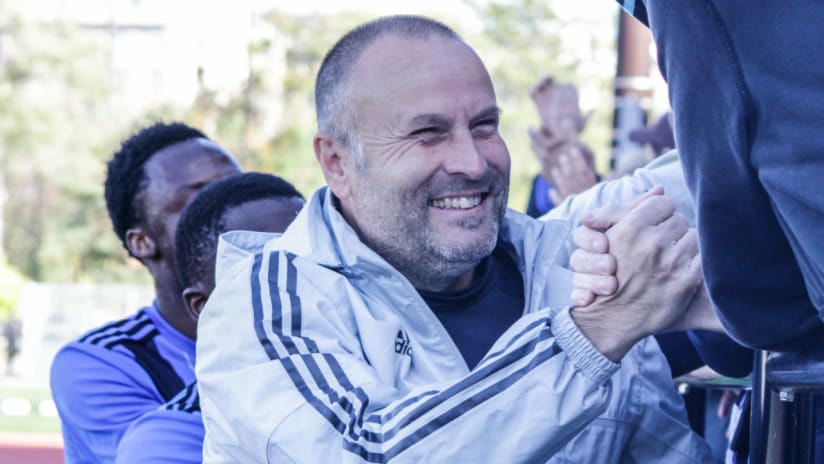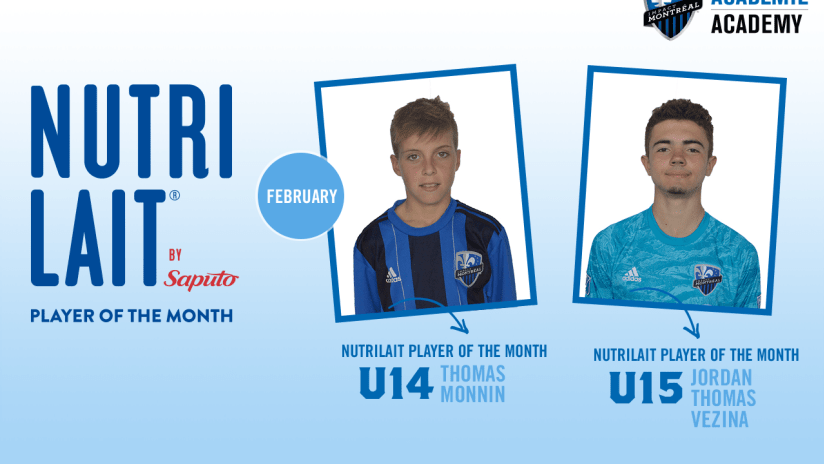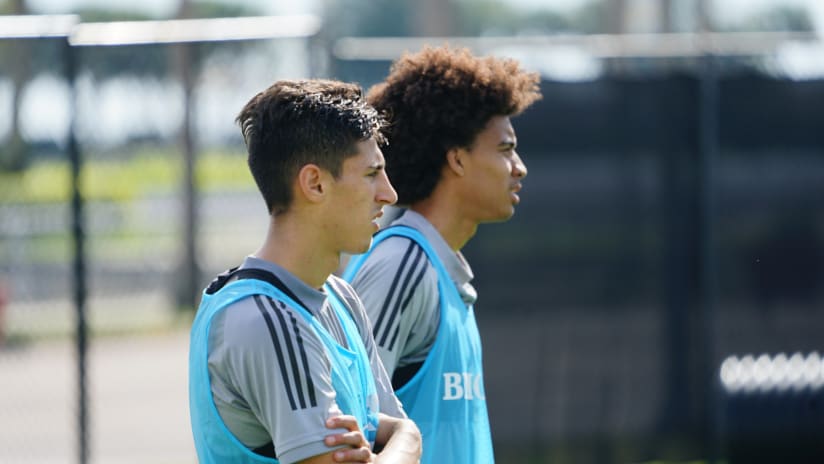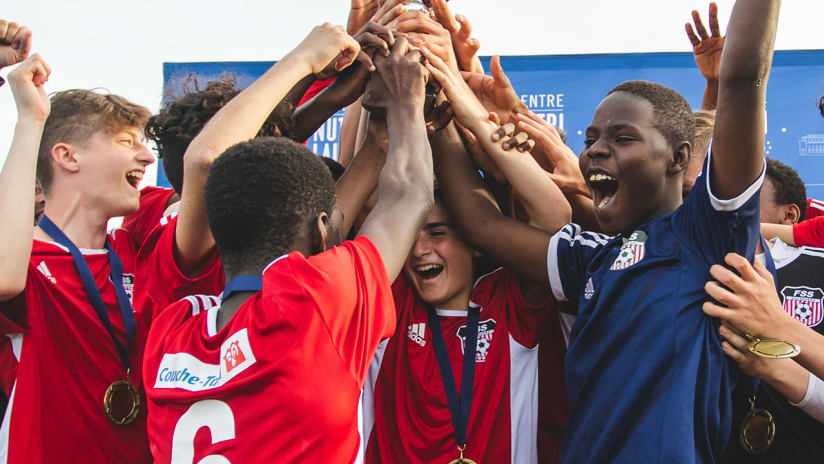This year, a second group of MLS instructors took advantage of the affiliation between the Fédération Française de Football and the North American top tier league to improve the methodology and teaching within our academies.
Wilfried Nancy, now an assistant coach with the Impact first team, was one of the first coaches that do so in 2013, when he was the Impact U16 head coach.
This time, Montreal Impact Academy Director Philippe Eullaffroy took part in the different phases of this course with his colleagues from all around MLS.
The course started with two weeks in Europe. The first one, at Clairefontaine, France, was centred on methodology and teaching in place at the Fédération Française de Football for the development of players.
Then, the educators chose one training centre from a list of well-known academies in Europe. Eullaffroy selected AZ Alkmaar, in the Netherlands, a training centre that earned the Rinus Michels Award for best Dutch academy in 2015 and 2016.
After two weeks of observation in Europe, the Impact Academy Director went to Philadelphia, Atlanta, New York and Kansas City for different workshops on video analysis and statistics, fitness training, the mental aspect of the game and group management.
MLS Projects
MLS makes no secret of the fact that it wants to be one of the world’s top leagues by 2022. But an important part of its success will be the development of local players. The link between MLS and the FFF was put in place because of a desire to find inspiration in a country that specializes in player development.
“The goal, for MLS, is also to be one of the best environments in the world for player development,” said Academy Director Philippe Eullaffroy. “To develop good players, you need to develop good coaches. The league wanted to know which was the country that best develops players and coaches. It turned to France and to its Federation, one that is renowned worldwide in this field.”
Work already in place at the Impact
While many interesting aspects were covered during these seven weeks of training spread over 12 months, Eullaffroy was mostly happy to see that the Bleu-blanc-noir Academy was already going in the right direction.
Thanks to classes in place at the Academy Institute, players from all different age groups have access to the latest trends when it comes to off-the-field preparation and nutrition, as an example.
“I was not surprised to see that we were going in the right direction,” added Eullaffroy. “We had Wilfried Nancy’s feedback the first time and he confirmed it to us. But we also got the visit of top FFF executives that gave us positive feedback. But there were always good things to learn every week of this formation.”
When he opens his notebook, Eullaffroy shows everything he highlighted in yellow, representing new ideas he learned during the courses. At least forty ideas, all relevant to the Impact Academy, are underlined.
“These are ideas that we wouldn’t have had without this course. For example, taking high level clips to put together and create game situations in training. It seems obvious, but we usually work with exercises that we create or see in books. It’s simpler and more realistic to look at a high level situation. For example, a situation where you recover the ball with a low block that you can see in a Champions League game and you create an exercise from this video clip. Five years ago, we couldn’t do that. Now, we have the technology to do it at the Academy.”
The Academy educators already use video clips from the Impact teams to show their principles of play to the young players. But using more videos and high level situations to individualize the personal development could be a way to get to the next level.
The educators of each MLS club learn many things during this course, but each of them can learn something different and adapt it to their academy. Links are created between the educators from different clubs, even if in the end, they remain competitors. The exchanges help everyone take advantage of new ideas.




